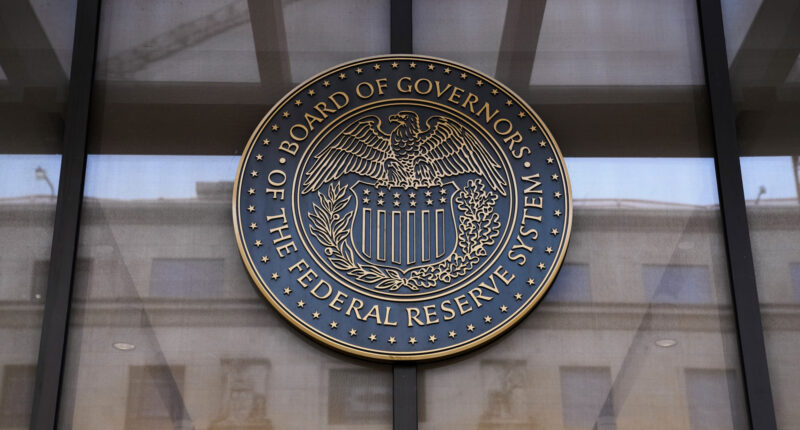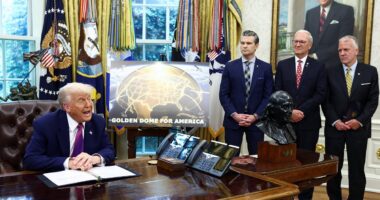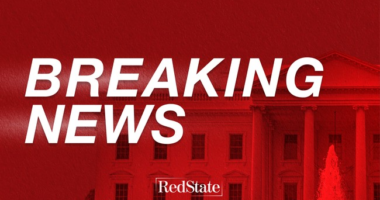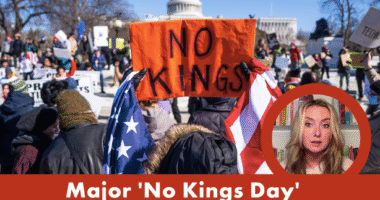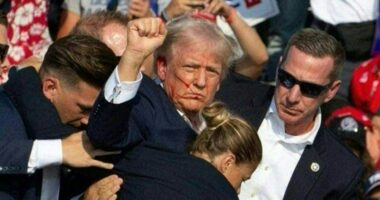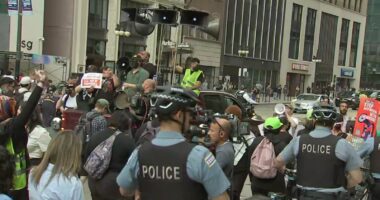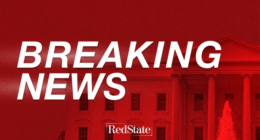According to some economists, the Federal Reserve might maintain its key rate at the current level for several months to assess the effects of President Donald Trump’s extensive tariffs on employment and inflation, despite the White House advocating for a rate cut.
It is highly probable that the Fed will opt to leave its rate unchanged following the conclusion of its most recent policy meeting on Wednesday. Chair Jerome Powell and other Fed officials have conveyed their intention to monitor how the tariffs, notably the 145% duty on all goods imported from China, influence consumer prices and the overall economy.
The Federal Reserve’s cautious approach could potentially trigger further tension between the central bank and the Trump administration. In a recent television interview, President Trump once again urged the Fed to lower rates and insinuated that Powell’s disposition towards him might be influencing policy decisions. With inflation currently hovering close to the Fed’s target of 2%, Trump and Treasury Secretary Scott Bessent assert that there is room for a rate reduction, despite the Fed’s efforts to combat inflation by increasing rates in 2022 and 2023.
If the Fed were to cut, it could lower other borrowing costs, such as for mortgages, auto loans, and credit cards, though that is not guaranteed.
Trump also said Sunday he wouldn’t fire Powell because the chair’s term ends next May and he will be able to appoint a new chair then. Yet if the economy stumbles in the coming months, Trump could renew his threats to remove Powell.
A big issue facing the Fed is how tariffs will impact inflation. Nearly all economists and Fed officials expect the import taxes will lift prices, but it’s not clear by how much or for how long. Tariffs typically cause a one-time increase in prices, but not necessarily ongoing inflation. Yet if Trump announces further tariffs – as he has threatened to do on pharmaceuticals, semiconductors, and copper – or if Americans worry that inflation will get worse, that could send prices higher in a more persistent way.
Kathy Bostjancic, chief economist at Nationwide, said this could keep the Fed on the sidelines until September.
“It’s hard for them to cut sooner because they’ve got to weigh, what’s the inflation impact?” Bostjancic said. “Is this going to be somewhat persistent and add to inflation expectations?”
Economists and the Fed are closely watching inflation expectations, which are essentially a measure of how much consumers are concerned that inflation will worsen. Higher inflation expectations can be self-fulfilling, because it Americans think prices will rise, they can take steps that push up costs, such as asking for higher wages.
For now, the U.S. economy is mostly in solid shape, and inflation has cooled considerably from its peak in 2022. Consumers are spending at a healthy pace, though some of that may reflect buying things like cars ahead of tariffs. Businesses are still adding workers at a steady pace, and unemployment is low.
Still, there are signs inflation will worsen in the coming months. Surveys of both manufacturing and services firms show that they are seeing higher prices from their suppliers. And a survey by the Federal Reserve’s Dallas branch found that nearly 55% of manufacturing firms expect to pass on the impact of tariff increases to their customers.
“The bottom line is that inflation will be rising significantly over the next six months,” Torsten Slok, chief economist at the Apollo Group, said in an email.
Yet the tariffs could also weigh heavily on the economy, particularly because of the uncertainty they have created. Huge tariffs on about 60 other nations, announced April 2, were then postponed until July 9, but could be reimposed. Business surveys show that firms are postponing investment decisions until they have greater clarity.
Ryan Sweet, chief U.S. economist at Oxford Economics, said the uncertainty surrounding trade policy gives him “night terrors.”
“The economics of uncertainty are absolutely suffocating,” Sweet said. “Businesses that don’t know the rules of the road, their knee-jerk reaction is to sit on their hands. And that’s what they’re doing.”
But if the uncertainty delays hiring, slows the economy and pushes up the unemployment rate, the Fed could quickly shift toward interest rate cuts. A sharp economic slowdown could eventually cool inflation by itself, economists say.
“If you felt like the economy was really slowing down, then I think that would probably take precedence (over inflation), because usually the way the committee thinks is that will also drag inflation somewhat with it,” said Jim Bullard, former president of the Federal Reserve’s St. Louis branch, and currently dean of Purdue University’s business school.
In March, the Fed signaled that it could cut rates twice this year. But since then, the Trump administration imposed duties that Powell said last month were larger and broader than the Fed expected.
The duties, Powell acknowledged, could both slow growth and lift prices, which puts the Fed in a tough spot. It would usually cut rates to boost growth and hiring, while it would raise them to cool spending and inflation. Powell signaled that if the two goals came into conflict, Fed officials would put more weight on inflation concerns.
“Without price stability, we cannot achieve the long periods of strong labor market conditions that benefit all Americans,” Powell said.
Copyright © 2025 by The Associated Press. All Rights Reserved.
